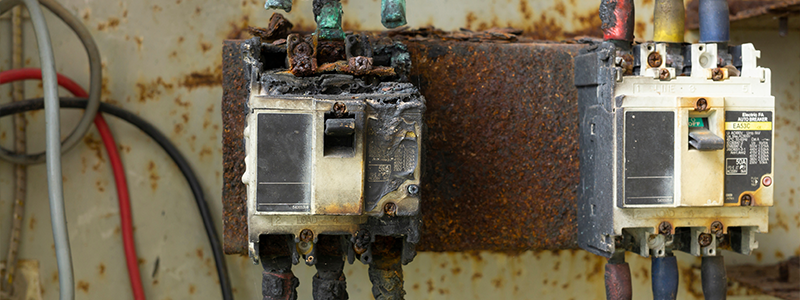Microprocessors are used by arc fault protection devices (AFDD) to recognise the distinctive current flow and voltage curves that signify an arc fault and automatically trip the impacted circuit.
This considerably lowers the chance of fire as a result of poor connections and conductors. The AFDD’s protective function has already gained recognition on a global scale and has been in use in Germany since February 2016.
I.S. 10101 advises using them to offer supplemental fire protection.
Microprocessor Monitoring
Arc faults in series and parallel can also trigger an AFDD. An AFDD uses electronic technology to analyse the waveform of an arc instead of an electromechanical trigger like circuit breakers or RCDs do. In order to avoid false tripping, it consistently distinguishes between an arc fault and the signature (waveform) of typical switching and control events.
Potential Causes
Arc faults can be caused by all types of line faults and worn contacts;
- Kink / break in a cable
- Cable wear due to frequent use
- Cable damage resulting from drilling or construction work
- Incorrect wire stripping
- Incorrect bending radii
- Loose screwed connections
- Defective wall plugs
- Rodents biting cables
An AFDD will trip the circuit when a potentially hazardous arc occurs, eliminating the resulting fire hazard.
Ring Final Circuits
Contrary to popular opinion, ring final circuits and the equipment supplied from these circuits are protected against arc faults by AFDDs. However, a series arc fault in only one leg is not likely to be at a harmful level and won’t be noticed. This is caused by the current, which in this case is flowing around the other leg of the ring. Equipment and flexible cables connected to the ring final circuit will show signs of a series arc problem. In all areas of the ring circuit and on all connected equipment, parallel arc faults are found and disconnected.
Kempston Controls is committed to finding you the ideal solution for your application. Call us today on 042 9359393, email us at electrical@kempstoncontrols.ie, or alternatively contact us here, we will be happy to help.


